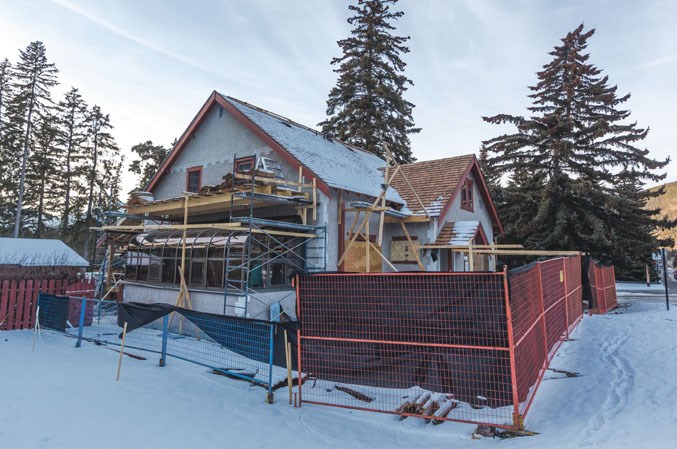BANFF – The Town of Banff is taking a look at how it regulates commercial accommodation in residential neighbourhoods.
Public input is being sought as part of the controversial review on several options, including tougher enforcement on illegal B&Bs and those operating outside the terms of their permits, special considerations for B&B applications in heritage homes, the possibility of a differential tax rate and the annual renewal process, among others.
The B&B quota, which limits of the number of B&Bs town-wide to 65 through a district-by-district allocation system, is also part of the review. There are currently 48 approved B&Bs in Banff, but some districts have reached their cap.
“We’re obviously going down this very deep rabbit hole,” said Mayor Karen Sorensen. “I think this is an opportunity to have a very good public discussion.”
Aside from commercial growth and the imbalance between commercial and residential development, how to better regulate the proliferation of B&Bs was one of the single biggest issues in the development debates of the 1990s.
The number of applications for B&Bs in Banff tapered off almost immediately after the quota was put in place in 1998 and interest in opening up a B&B operation waned throughout the years until recently.
With the popularity of websites like Airbnb and VRBO, cities and towns around the world have been struggling to control the number of short-term rental accommodations amid concerns it can affect housing availability and housing prices.
As part of enforcement crackdown in recent years, the Town of Banff has been fairly successful at ensuring the only tourist homes in residential neighbourhoods have approved B&B permits.
Active monitoring of online vacation rental sites has led to illegal tourist homes being forced to get B&B permits or were shut down. For the first time, three B&Bs had their permits revoked last year for selling more rooms than allowed and violating live-in owner requirements.
Town of Banff officials say high occupancy rates in hotels, with the rise in visitation to the park to more than four million people, may play a part in more tourists seeking accommodation in the more personal B&B homes.
Dave Michaels, development planner for the Town of Banff, said administration has seen a number of rooms in B&Bs advertised for more than $300 a night, as well as all approved guest rooms offered for a rate of up to $1,990 per night with a five-night minimum stay.
“These rates may offer operators a greater incentive to offer short-term commercial accommodation rather than long-term rental,” he said, noting the 2017 average daily rate for hotels was $250, with a maximum average of $363 in July and August. These figures include B&B inns, but not homes. “In addition, an operator may have a similar revenue per bedroom as a hotel-motel without the additional costs of commercial tax.”
Many B&B owners, who voiced opposition to singling out B&B homes for a differential tax rate compared to other home-based businesses, don’t buy into the argument that B&B rooms take away from the limited affordable rental housing supply.
April Wood, who owns At Wits End B&B on Mountain Avenue with her husband Peter, said she believes the affect B&Bs have on Banff’s housing supply is almost negligible.
“There’s been minimal growth in B&Bs since incorporation, while during this time there’s been significant growth in areas such as retail, restaurants and hotels, which have all created significant job opportunities and demands on housing,” she said.
“I think it’s a stretch to assume that if the bedrooms in these single family homes were not utilized for B&B operations that they would be used for monthly tenants.”
Ross Glenfield, who previously ran a B&B on Beaver Street, but did not seek renewal of his permit beyond 2016, said he would like the Town to consider a wider variety of variances to encourage residents setting up B&B homes.
Currently, variances can only be granted to B&Bs within highly valued heritage homes, but he said other variances for parking, live-in ownership and mixed-use developments should be considered.
“I would suggest the limits on variances might play a part in the under representation of B&Bs in some districts,” said Glenfield, noting that’s particularly the case in districts close to downtown.
“B&Bs tend to be well kept by B&B owners and a broader view of variances would revitalize properties in these under-utilized districts.”
Options on the quota under discussion include increasing the cap to meet visitor demand, or limiting to the existing number of 46 B&B homes and inns, therefore putting a hold on all applications until an allocation becomes available.
The review will also consider keeping the quota at 65, but reallocating the number to allow new B&Bs in neighbourhoods where the district cap has already been reached, or reducing the overall number but removing the limits per district to have a community-wide cap.




